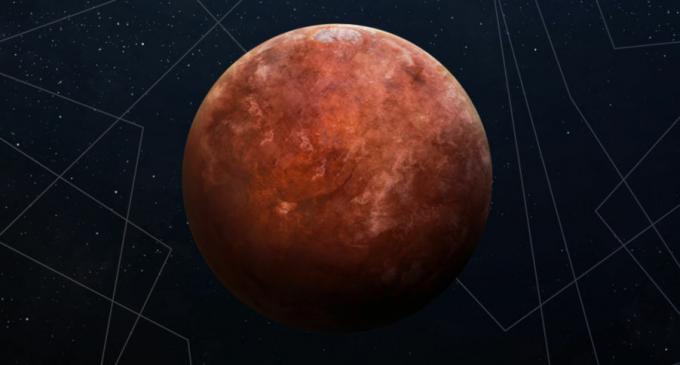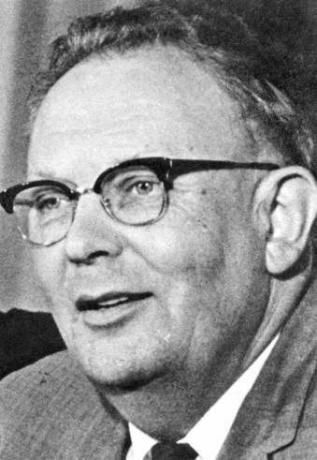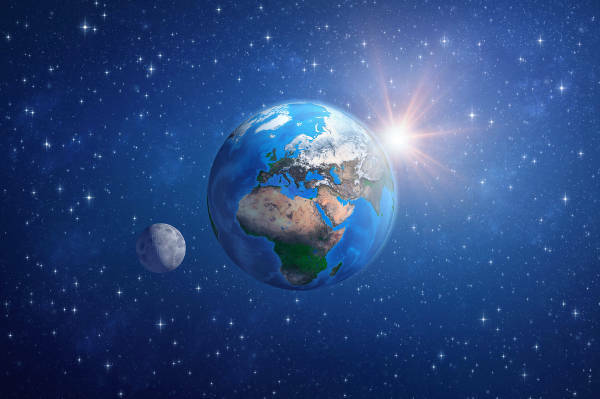The arrival of man on the Moon, on July 20, 1969, constitutes one of the greatest scientific achievements of the 20th century.
On July 20, 1969, two American astronauts, Neil Armstrong and Buzz Aldrin, became the first humans to set foot on lunar soil. A third, Michael Collins, stayed in orbit supporting the teammates.
This feat was only possible due to a heavy technical-scientific investment of 22 billion dollars that involved more than 100,000 people.
Also, in the 1960s, the two world powers, the United States and the Soviet Union, used the space conquest to advertise the benefits of their respective systems politicians.
The Soviets sent the first man to fly over space, cosmonaut Yuri Gagarin. Sensing that they were left behind in the space race, US President John Kennedy launches the challenge of landing on the moon before the end of the 1960s.
Apollo 11 Project
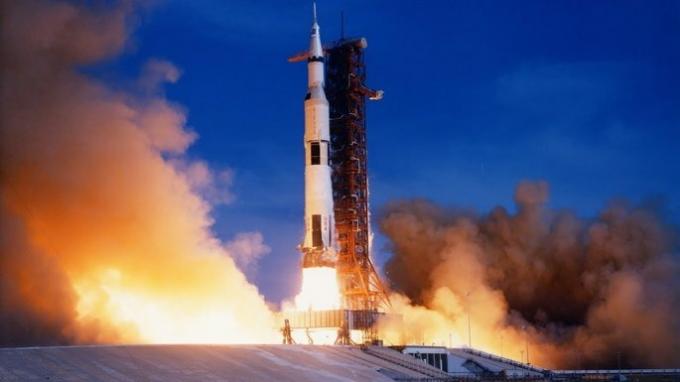
Apollo 11 was the name of the project and spacecraft that brought the first humans to Earth's satellite.
It consisted of a 45-ton ship, made up of three modules: command, service and lunar. It was launched from the beak of the largest and most powerful rocket ever built, the Saturn V, 110 meters high.
At the time of departure, the Saturn V weighed more than 3,000 tons and most of it corresponded to fuel. It should burn fast enough to propel its charge at a speed of 40,000 kilometers per hour.
In turn, the lunar module had 4.5 square meters inside and had no bathroom, which made it very difficult for the astronauts to keep their hygiene.
To enter the capsule, the astronauts made a symbolic offer to the person responsible for introducing them into the module, engineer Gunter Wendt. Armstrong gave him a one-way ticket to the moon, Buzz a Bible with a dedication, and Michael a stuffed trout.
Before taking off, however, the crew needed to check 417 points.
Contact with the Earth
In addition to the operational base in Houston, the Human Space Flight Network (MSFN) was created.
This consisted of 11 shore stations, five boats with satellite dishes, and eight planes to support Apollo 11's launch and re-entry.
Three large stations were also built with identical antennas measuring 26 meters in diameter and 300 tons that were located in Goldstone (California), Honeysuckle Creek (Australia), and in Fresnedillas de la Oliva (Spain).
These places were not by chance, as the earth stations were at equidistant distances and lengths so that communication with the crew was maintained at all times.
Takeoff to the Moon
Take-off took place on July 16, 1969 at 1:32 pm.
The vibration was so strong that it was felt within a radius of 6 km. The noise was unbearable and even killed the birds that flew in the surroundings.
An estimated one million people gathered at Cape Canaveral (now Cape Kennedy) in Florida to attend the event. About 850 journalists from 55 countries recorded the event.
Based on this information, it is estimated that one billion people watched the landing on TV.
Trip to the moon
Twelve minutes after takeoff, the spacecraft was already out of Earth orbit. On the 19th, they entered the moon's gravitational field.
Michael Collins unhooked the Lunar Module (Eagle) so that Neil Armstrong and Buzz Aldrin could aunissar. Meanwhile, Collins wandered around the moon, waiting for his companions.
Eagle's landing was scheduled to take place in the Sea of Tranquility (despite the name it was a plain).
The landing, however, almost ends in tragedy, as there was only 30 seconds for the fuel to run out. Fortunately, the two astronauts managed to make the maneuver in time. As a result, Neil Armstrong landed one kilometer beyond the predicted point.
mission on the moon
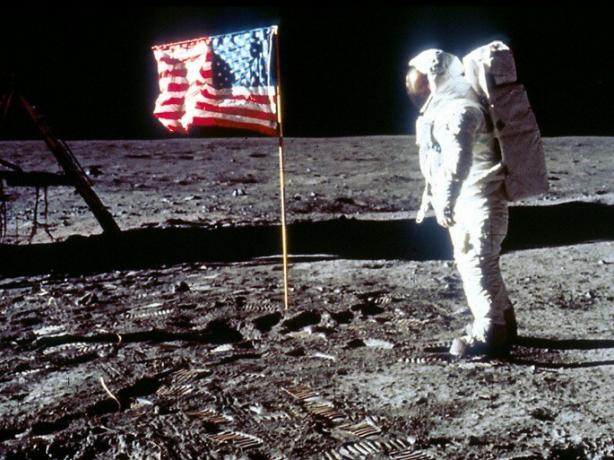
Once the cabin was depressurized, the astronauts were able to descend. As commander-pilot, Neil Armstrong did it first and was describing everything he saw. At this moment, he uttered his famous phrase:
One small step for the man. A giant step for humanity.
Aldrin would join his colleague about ten minutes later. They planted the American flag and proceeded to collect stones and moon dust.
Then they installed a seismograph, a laser beam reflector, a communication antenna, a panel for studying solar winds and a TV camera, which would work for five weeks.
In addition to the instruments mentioned, they left the American flag, the mission badge and the medals of the deceased Soviet cosmonauts Yuri Gagarin and Vladmir Komarov.
back to earth
On July 24th, eight days, three hours and 18 minutes after launch, Apollo 11 dove in the South Pacific near Polynesia.
The trio were isolated for three weeks to ensure they had not brought in any foreign bodies that would endanger the planet.
NASA would still send manned vehicles to the Moon until 1972 when Apollo 17 made the last trip to Earth's satellite. For its part, the Soviet Union would dedicate to the research and construction of an orbital station that would be the precursor of the International Space Station.
Watch here a summary of the man's trip to the Moon:
Be sure to read these texts too:
- Sputnik Satellites
- John Kennedy
- Moon Features
- 60's

